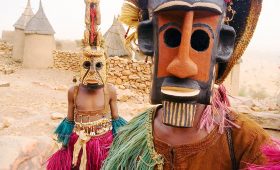Exploring the Kanchenjunga Conservation Area in Nepal
The Kanchenjunga Conservation Area, located in the northeastern corner of Nepal, is a remarkable destination for those seeking both natural beauty and cultural richness. Spanning 2,035 square kilometers in the Taplejung district, this area is named after Mount Kanchenjunga, the third highest peak in the world at 8,586 meters. Here, you’ll find a diverse range of ecosystems, from alpine meadows to dense forests and high-altitude glaciers.
Unique Features
The Kanchenjunga Conservation Area is renowned for its rich biodiversity. It is home to rare species such as the red panda, snow leopard, and Asian black bear. Bird enthusiasts can spot species like the golden-breasted fulvetta and blood pheasant. The conservation efforts, supported by community-based institutions since 2006, have made this one of the best-preserved natural habitats in the world. Exploring this area offers a firsthand look at the importance of conservation.
Local Culture and Heritage
Beyond its natural wonders, the Kanchenjunga Conservation Area offers a deep dive into the cultural heritage of the Limbu, Rai, and Sherpa communities. These ethnic groups maintain distinct traditions, languages, and customs. Engaging with the locals provides an enriching experience, offering insights into their way of life and the area’s cultural tapestry.
Best Time to Visit
While the Kanchenjunga Conservation Area can be visited year-round, the ideal times are spring (March to May) and autumn (September to November). Spring brings vibrant rhododendron blooms, while autumn offers clear skies and pleasant weather, perfect for trekking. Be aware that winter can bring heavy snowfall, which may affect travel plans.
How to Get There
Reaching the Kanchenjunga Conservation Area requires some planning. The most straightforward route is to fly to Biratnagar Airport, which connects to major cities in Nepal. From there, a 10-12 hour drive or bus ride takes you to Taplejung, the gateway to the conservation area. Alternatively, a domestic flight from Kathmandu to Taplejung takes about 45 minutes. The journey offers stunning views of the countryside, but be prepared for the long travel time.
Local Transportation
Once in Taplejung, local transportation options include hiring a guide or trekking on foot. A local guide is recommended for their extensive knowledge and to ensure safety. The terrain can be challenging, so physical fitness is essential. For those less inclined to trek, hiring a jeep to reach the base camp of Mount Kanchenjunga is an option, though it may limit the full experience of the area’s natural beauty.
Summary of Facts
- Located in the Taplejung district of Nepal, covering 2,035 square kilometers.
- Named after Mount Kanchenjunga, the third highest peak globally.
- Known for its rich biodiversity, including rare species like the red panda and snow leopard.
- Home to the Limbu, Rai, and Sherpa communities with distinct cultural traditions.
- Best visited in spring (March to May) and autumn (September to November).
- Nearest airport is Biratnagar, with Taplejung as the gateway.
- Local transportation includes hiring a guide or trekking.




